I'm encountering problems with my UITableViewCells. I connected my UITableView to a API to populate my cells.
Then I've created a function which grabs the indexPath.row to identify which JSON-object inside the array that should be sent to the RestaurantViewController.
Link to my Xcode Project for easier debugging and problem-solving
Here's how my small snippet looks for setting the "row-clicks" to a global variable.
func tableView(tableView: UITableView, didSelectRowAtIndexPath indexPath: NSIndexPath) {
i = indexPath.row
}
And here's my prepareForSegue() function that should hook up my push-segue to the RestaurantViewController.
override func prepareForSegue(segue: UIStoryboardSegue, sender: AnyObject!) {
if segue.identifier == "toRestaurant"{
let navigationController = segue.destinationViewController as UINavigationController
let vc = navigationController.topViewController as RestaurantViewController
vc.data = currentResponse[i] as NSArray
}
}
And here's how I've set up my segue from the UITableViewCell

Here's my result, I've tried to click every single one of these cells but I won't be pushed to another viewController...I also don't get an error. What is wrong here?

Tried solutions that won't work
override func prepareForSegue(segue: UIStoryboardSegue, sender: AnyObject!) {
if segue.identifier == "toRestaurant"{
let vc = segue.destinationViewController as RestaurantViewController
//let vc = navigationController.topViewController as RestaurantViewController
vc.data = currentResponse[i] as NSArray
}
}